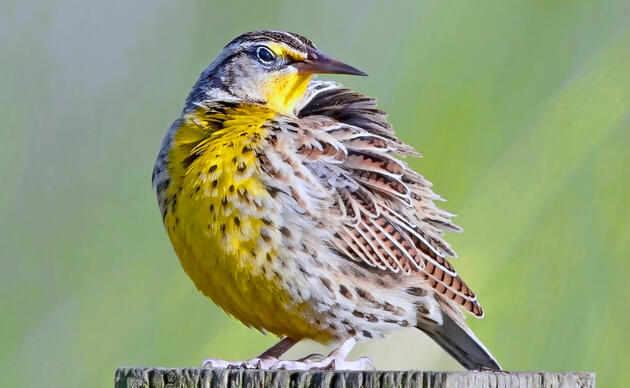Why would one decide to do a prairie restoration on his farm? For me, it started with many hours on the native prairies on the farm where I grew up. This was not recreational time, as it was spent building or fixing fences, making prairie hay, and checking on and herding cattle. There was usually time, however, to wander a bit, often sampling the edible plants I had been taught by my Polish grandmother. Busha was born on a nearby homestead in the 1880s and her family would trade with the Dakota families who still wandered the area that homesteaders had pushed them out of. Thus, I would dig and eat prairie turnips, pick buffalo beans (groundplums) and dig wild onions, often in conjunction with picking wildflowers to bring home to my mother. All through my adult life, I would go back to spend time there, and in my 40’s my parents sold me the farm.
About ten years ago my younger daughter started an MS program in biology with a thesis project characterizing prairies where Dakota skipper butterflies, a federally listed species, had been found. Though my home farm was just outside her study area it piqued my interest and I asked a biologist friend to survey my prairies. To my delight, he found a small population of Dakota skippers. This was also a time in my life when I needed my own project, one that would allow me to feel that I was moving forward, going towards something, not just receding and diminishing as I approached retirement and old age. Thus, in 2018, a decision was made to use the federal Conservation Reserve Program (CRP) to help fund a prairie restoration on 150 acres adjacent to the prairies where the butterflies had been found and to plant species that were connected to the survival and reproduction of Dakota skippers. We could receive some income to replace the cash rent, provide habitat for pollinators and grassland birds, have an enjoyable return to my prairie roots, and maybe even look cool to my daughter. Much of the farm ground that I was seeding down was not very productive and it included some hilly erodible soils, so I felt I was contributing to soil health and water quality as well.
That all sounds fine, but it is an inadequate description of the decision. One hundred fifty acres, even one hundred fifty acres of marginal ground, will grow a lot of food, and those of us who steward the land have a moral responsibility to help the land provide the greatest amount of benefits to the world that we can. My entire working life has been spent helping farmers grow crops in a responsible and efficient manner; I don’t take the decision to remove land from crop production lightly. Much thought and work has gone and is continuing to go into maximizing the ecosystem services these 150 acres can provide. The goal is to not only create a restoration that is home to butterflies and grassland birds (I have already seen upland sandpipers, grasshopper and vesper sparrows, bobolinks, dickcissels, a short-eared owl and have raised a couple of families of sharptailed grouse on the restoration) but also provide a place for the local genotypes of the native wildflowers whose seed I have gathered and spread. It will be managed to do this while raising as much beef as the forage allows when the CRP contract ends. There is more, though, if I think expansively. This project might be leveraged by including neighbors if I can put myself in their shoes and create a persuasive business case for them to extend the reach of the restoration by the management of their land. Perhaps it can be a model to ponder for other landowners and even conservation professionals like my friends at Audubon Dakota. The trendy business term is “scaleable”, a model which has the potential to be repeated.
Prairie dreams, I guess, is what I have, and this can be viewed as an invitation to others to dream, and perhaps imagine a grand project of their own. There are millions of acres of farm ground here in the Dakotas which aren’t very productive or are awkward and inefficient to farm. These areas, many as small as five or ten acres, might be more valuable growing pollinators and birds, sequestering carbon and feeding cattle than growing corn and soybeans. This journey, the way that I have traveled it, has been a great deal of work, but it’s been incredibly rewarding work. It’s what I am dreaming of through the cold Dakota winter as the wind blows. What will I see out there next spring and summer? How should I spend my hours to help the project develop? Who might be interested in sharing this journey? Prairie dreams.
Author: Bob Narem









